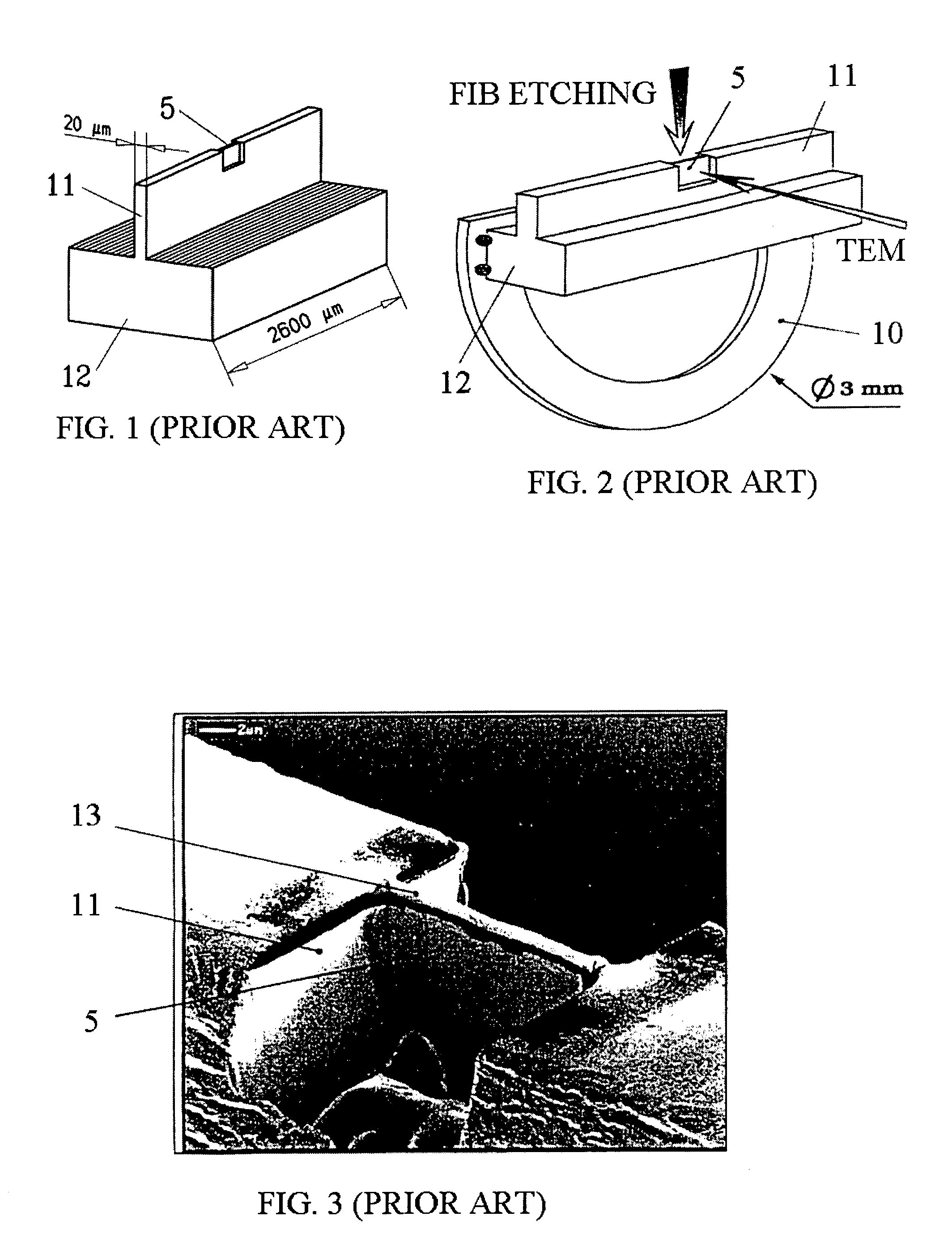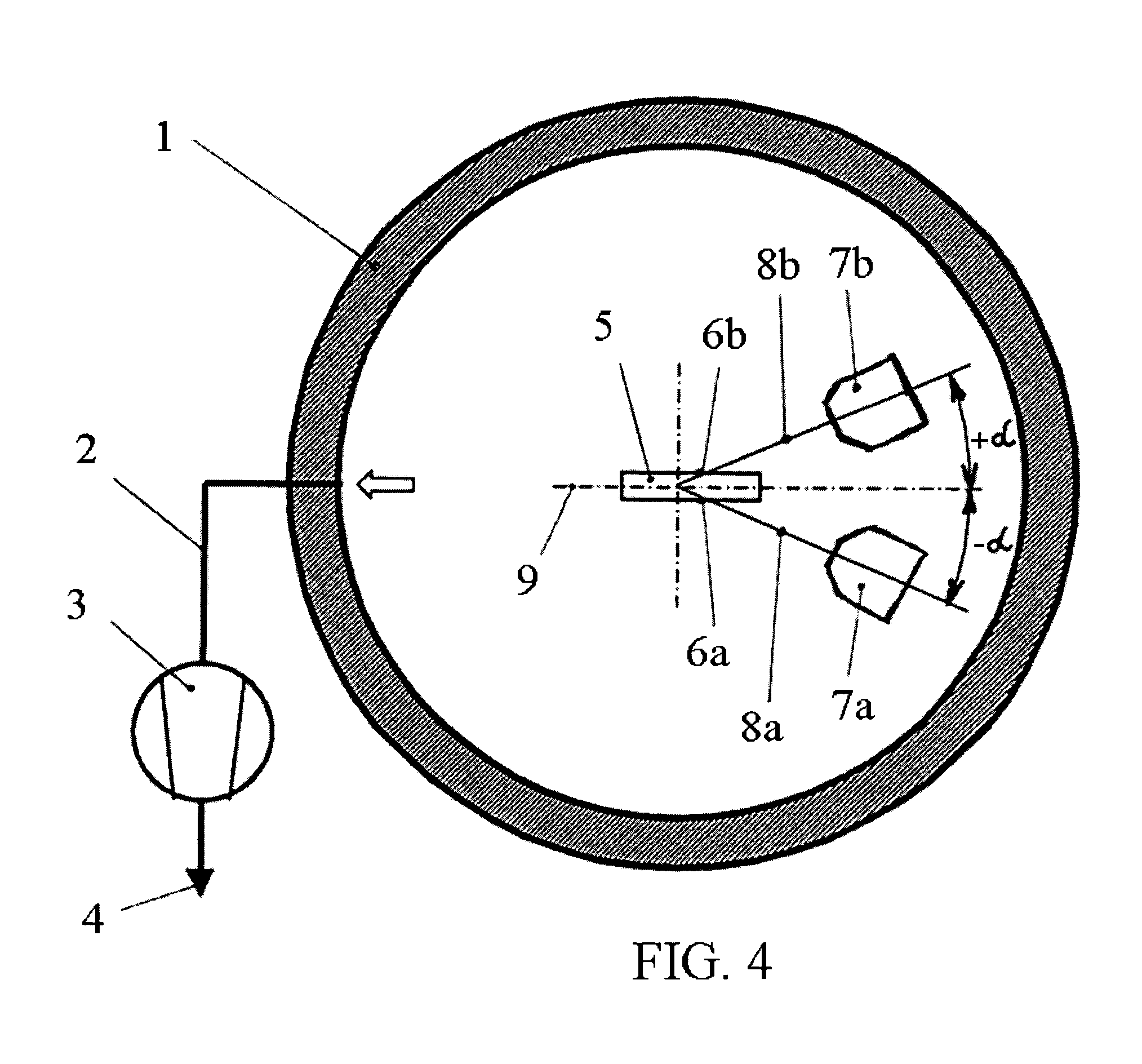Sample preparation for transmission electron microscopy
a transmission electron microscopy and sample technology, applied in the field of sample preparation for transmission electron microscopy, can solve the problems of significantly greater margin amorphization, insufficient thinness of lamella, and inability to yield the desired sample quality, and achieve the effect of high degree of detail
- Summary
- Abstract
- Description
- Claims
- Application Information
AI Technical Summary
Benefits of technology
Problems solved by technology
Method used
Image
Examples
Embodiment Construction
[0016]For the production of an FIB sample from the solid body material, for example from a semiconductor wafer, a sample piece 12 is removed and on it through mechanical sawing a web 11 is roughed out, such as is shown for example in FIG. 1. The sample piece 12 is approximately 2600 μm long and the width of the web is approximately 20 μm. On the front face of the web 11 in a partial region where the lamella sample 5 is to be generated, a protective coating is applied which serves as masking for the subjacent lamella 5 which is to be etched out. With a focused ion beam (FIB) impinging perpendicularly on the front face of the web the lamella 5 is now exposed by depth etching. This is schematically shown in FIG. 2 by the arrow with the label “FIB etching”.
[0017]The sample piece 12 with the lamella sample 5 is now disposed on a sample holder 10 with a diameter of for example 3 mm, and can now be observed in the TEM, as is also indicated schematically in FIG. 2 by the arrow and the assoc...
PUM
| Property | Measurement | Unit |
|---|---|---|
| thickness | aaaaa | aaaaa |
| thickness | aaaaa | aaaaa |
| disturbance depth | aaaaa | aaaaa |
Abstract
Description
Claims
Application Information
 Login to View More
Login to View More - R&D
- Intellectual Property
- Life Sciences
- Materials
- Tech Scout
- Unparalleled Data Quality
- Higher Quality Content
- 60% Fewer Hallucinations
Browse by: Latest US Patents, China's latest patents, Technical Efficacy Thesaurus, Application Domain, Technology Topic, Popular Technical Reports.
© 2025 PatSnap. All rights reserved.Legal|Privacy policy|Modern Slavery Act Transparency Statement|Sitemap|About US| Contact US: help@patsnap.com



